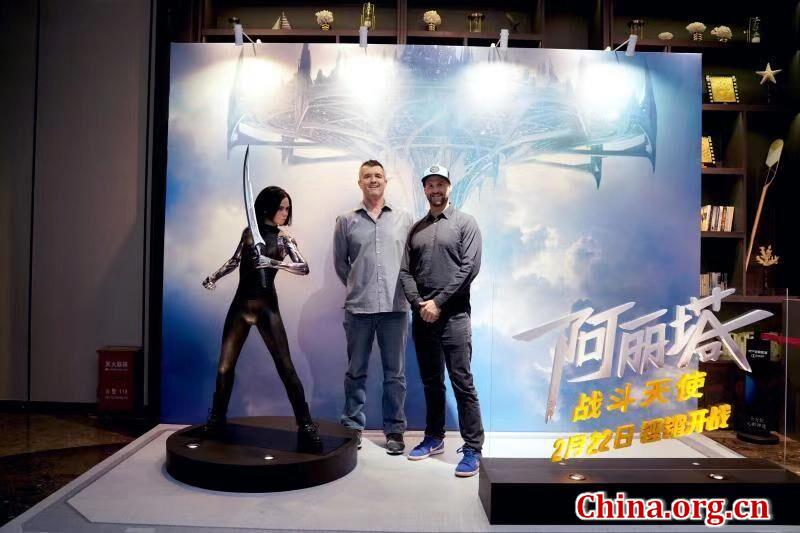Weta gurus talk about making 'Alita: Battle Angel'
- By Zhang Rui
 0 Comment(s)
0 Comment(s) Print
Print E-mail China.org.cn, January 27, 2019
E-mail China.org.cn, January 27, 2019

Two special effects supervisors from world-renowned Weta Digital shared their insights of Robert Rodriguez's "Alita: Battle Angel" in Beijing on Friday.
Journalists and industry insiders had an opportunity to preview and applaud 30 minutes of exciting footage from the film before Mike Cozens, animation supervisor, and Eric Saindon, visual effects supervisor of Weta Digital, took to the stage to share how they help create the film’s awesome visuals.
"Alita: Battle Angel", based on Japanese manga artist Yukito Kishiro's "Gunnm", is a film that was in preparation by James Cameron for nearly two decades. However, as Cameron is now busy with "Avatar 2", a much bigger project, he handed over "Alita" to Rodriguez, along with his 186-page original script and more than 1,000 pages of notes of guidance.
As Cameron is still serving as executive producer, the "Alita: Battle Angel" production used state-of-art technologies developed for "Avatar", such as the Fusion Camera System, facial performance capture, and the Simulcam. Cameron also spent 10 months developing the necessary technology.
Thus, "Alita: Battle Angel" will be a technical upgrade and an advance than on "Avatar." In the film, there is also the first humanoid role, Alita, in the cinema history, a combination of CGI and real people.
Cameron intended to render Alita completely in CGI, with her constructed based on actress Rosa Salazar's facial expressions and body movements, Cozens and Saindon explained. Technicians used Salazar's teeth and the gums as foundations for building the facial muscle system, then added muscle and fat tissue to the bones step-by-step to eventually produce a blood-and-flesh character.
The high-quality texture of the visual spectacle is inseparable from its rigorous production, and the data in all aspects of the film are truly amazing. In shaping her character, Alita has 47 hair styles, along with various eyebrows and eyelashes. There are more than CGI 132,000 hairs, 2,000 eyebrows, 480 eyelashes.
Engineers even implemented a single hair in each pore of Alita's skin. More than 2,500 framed images of her facial expressions are used and one of Alita's eyes has nine million digital polygons in just one iris. In comparison, the eyes of Gollum in "The Lord of Rings" used just 50,000 polygons.
The engineers stressed that audience may only see the mechanical body of Alita, without realizing she is actually a simulation CGI mannequin made of more than 8,000 pieces. Her body has more than 800 internal parts, large and small and her Berserker Body is assembled using 2,700 parts.
According to published data, "Alita: Battle Angel" uses three times more disk space than Weta Digital used for "Avatar." About 800 staff participated in the project, compared to the 45 who were involved in the first "Lord of the Rings" film.
The two engineers said they used 30,000 computers in the production, and team's computer rendering time for visual effects scenes involved a cumulative 432 million hours.
"Alita: Battle Angel" will hit Chinese theaters on Feb. 22, the first Hollywood blockbuster to open in China after the highly-competitive Spring Festival film season.






Go to Forum >>0 Comment(s)